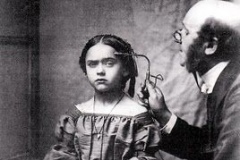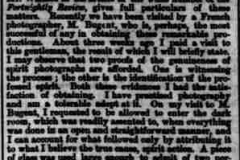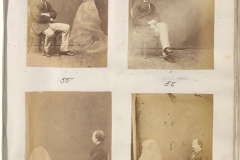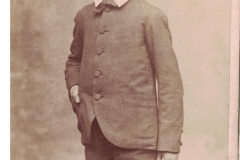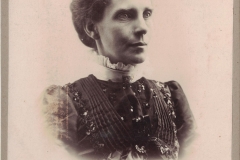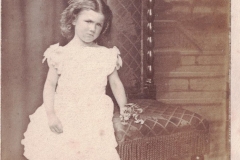The Vanishing Trick – Phantoms and Photographs
The Victorian Era is my favourite period in history to research, because the Victorians left so much behind for us to study – buildings, newspapers, advertisements, and most exciting of all, photographs.
Having a portrait painted is slow and expensive, so throughout much of history, only rich people could afford a picture of themselves. The faces of everyday people are missing from our galleries and records. But fast, cheap photography gave us thousands of photos of ordinary people. We can see people who lived nearly 200 years ago, exactly as they looked on the day the photo was taken.

The oldest existing photographs were created around 1826, though they look grainy and rough. Improvements happened quickly and by the 1840s huge numbers of people were having their photos taken. In these early days, it took several minutes to capture a picture. People had to stay completely still or the picture would be blurry. It’s quite hard to hold a natural looking smile for three minutes at a time, which is one of the reasons why Victorian photos look formal and stuffy. The other reason is fashion – people thought a serious expression looked dignified.
Victorian photographs were made by coating sheets of glass or metal (called ‘plates’) with a special chemical called silver nitrate, which reacts to light. The silver nitrate changed colour depending on how much light reached it, capturing the image. Then the plate was bathed in different liquids to stop the picture darkening or fading.

By 1876 when this story takes place, cameras had improved and photos could be printed onto card instead of delicate sheets of silver and glass. This made them even more popular as they could easily be copied, sent through the post, or sold as souvenirs.
Just as cameras became more advanced, photographers were learning and experimenting with trick photography. A clever photographer could layer images together to make it seem like a woman was sitting inside a wine glass, or a man was holding his own severed head.

Some photographers decided to make ‘ghosts’ appear on their pictures. Some, like Pinchbeck in The Vanishing Trick, used double-exposure – exposing the same ‘plate’ to light twice, effectively making two photos on top of each other. Any objects (like furniture) which were in both pictures would look solid, whilst anything only in one picture would look see-through and ghostly.

The Victorians were fascinated with ghosts, so ‘spirit photography’ became very popular. In both England and America, mediums held seances and claimed to speak to the dead. It may seem surprising to us that so many Victorians believed in ghosts and seances, but lots of sensible and educated people did. Even Queen Victoria attended some seances.
The 1800s were a time of huge change in the UK, with advances in science and invention changing the way people lived. At the beginning of the century, Cunning-Folk made their money by selling a mixture of herbal remedies and magic. You might have consulted someone like Edmund Pellar to cure a tummy-ache, lift a curse, or find a thief. By the end of the century the Cunning-Folk had died out because beginnings of modern medicine and the police force were taking shape, and people were letting go of their old beliefs in magic and superstition. But interest in mediums and seances was still gaining popularity. Perhaps people weren’t ready to give up on magic entirely.
Perhaps we still aren’t.


